A Brief History of Tsumami Zaiku September 25, 2021 – Posted in: Art, Crafts, News – Tags: culture, geisha, history, Japanese Traditional Art, Kanzashi, TakaraCrafts, Tsumami-zaiku
Before I begin, I would like to express my gratitude to Miss Tomomi Yamashita from Knot Japan, who provided valuable information on the history of Tsumami-Zaiku, as well as much needed support to fellow Tsumami-Zaiku artists around the world.
When I began my artistic journey of Tsumami-Zaiku in early 2016, I could not find much information about the craft. Living in the UK, I didn’t have access to lessons or textbooks, so I learnt the most basic techniques from a few blogs and videos. In terms of the history of Tsumami-Zaiku, all I knew was that the craft was originated some time in the Edo period, and that it is often used for making Maikos’ headpieces. As I progressed, I learnt new skills and gained insights on details of techniques that I had previously overlooked; and at the same time, I found out a bit more about the history of the craft. It’s about time for me to organise my findings and share them with you.
History of Tsumami-Zaiku: The Beginning
The origin of Tusmami-Zaiku can be traced back to 1780s Kyoto. The craft was created by a nobleman named Lord Yasuteru, who was passionate about handicrafts. Using his wife’s old kimono as material, he cut it up into small pieces of fabric. He sharpened the tips of a pair of chopsticks and used them as a tool to fold the material. He spread glue onto the back of his hand for gluing the petals. For his first project, he made a Kusudama Kanzashi – a hair prong decorated with a small sphere.
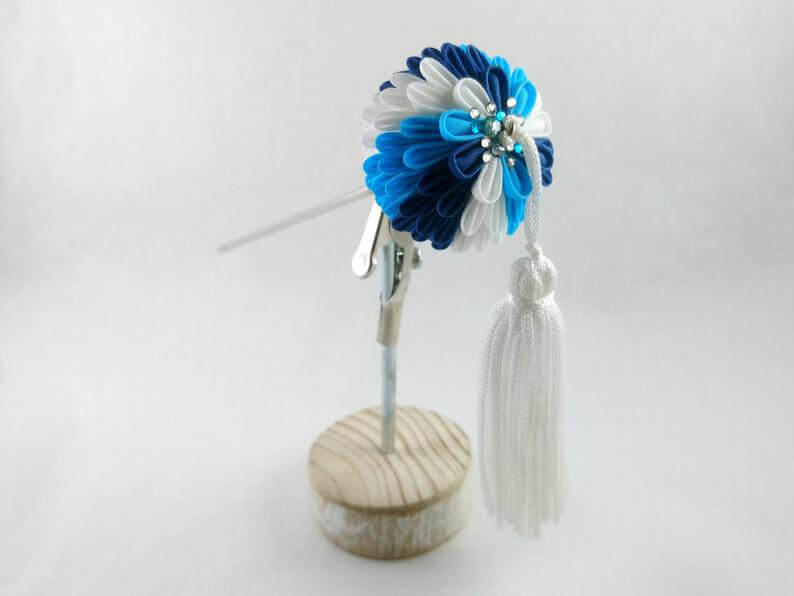
After his first creation, Lord Yasuteru further developed the craft. To fold the fabric, he used a curved piece of bamboo, which acted like a pair of modern day tweezers. Instead of spreading glue on the back of his hand, he used a plank instead. His next major project was a sage-kusudama – a decoration that has been existing in Japan since ancient times. It consists of a sphere that is made of strips of bamboo which is embellished with flowers.
When Lord Yasuteru finished working on the piece, he offered it to Emperor Gomomozono, who used it to decorate his palace. The maids in the palace were inspired by Lord Yasuteru’s masterpiece and started crafting at their break times, and with that, Tsumami-Zaiku was popularised in the form of kanzashi.
Development and Popularisation of Tsumami-Zaiku in 1900s
Although Tsumami-zaiku has been continued for over 200 years, its techniques were mainly passed from masters to pupils; therefore, there are almost no publications remaining. As a result, the correct information of the history and techniques of the craft had not been passed down properly. Despite the situation, there exists a book which covers all the important technical information about the craft. Joshi Gigei Tsumami-Zaiku Sensho – literally translated as The Complete Book of Tsumami-Zaiku for Women’s Craft – is a technical book written in 1914 by Fusajirou Yoshioka, a Tsumami-zaiku teacher at a girl school.
The creation of the book was heavily influenced by Fusajirou’s father, Onari Yoshioka. Onari was an expert of Tsumami-Zaiku. He believed in the importance of craft education in women and popularised the craft in 1901. He taught in many girl schools and opened a workshop in his home as an effort to promote the craft. With the Ministry of Education issuing an instruction of craft education for women in 1903, Tsumami-Zaiku became even more prominent. However, Onari fell ill and regretfully passed away. As there was no publications on Tsumami-Zaiku, Fusajirou Yoshioka inherit Onari’s aspirations, and turned his father’s notes into a book.
The book consists of detail information on various aspects of Tsumami-Zaiku, including a list of tools and materials required for the craft, illustrations of folding techniques, and technical points on fabric dying. It also contains a number of tutorials with detailed instructions for readers to work on. From the richness of content, it is apparent that the book is the essence of Onari’s and Fusajirou’s knowledge and skills.
Apart from technical information, Fusajirou also encouraged readers to acquire the craft and improve their skills. He stated that the book was properly structured so that readers would be able to learn the craft and complete the tutorials. He asserted that it is important to master the basics and to persevere in one’s practice. Fusajirou’s passion for Tsumami-Zaiku and his aspiration in promoting the craft can be fully appreciated.
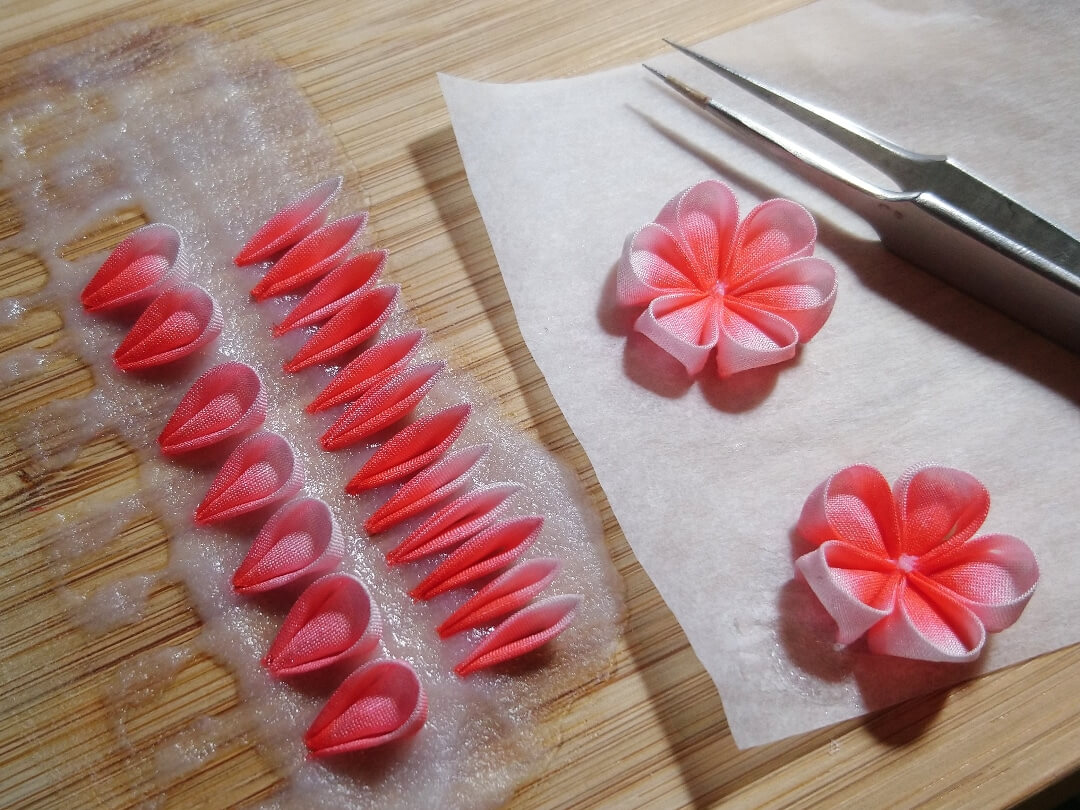
Tsumami-Zaiku Today
Nowadays, Tsumami-Zaiku has become a popular hobby and is practiced by many in Japan. The craft has also gained attention from countries around the world and many hobbyists also started practicing. However, the number of accredited craftsmen is low. According to an article back in 2016, there were around 10 accredited craftsmen in the Tokyo area.
Tusmami-Zaiku has always played an important part in the traditional entertainment scene, as it is adopted to create elaborate headpieces for Maiko. The craft is also used for creating hair accessories for special occasions such as coming-of-age ceremonies and weddings. With the popularisation of Tsumami-Zaiku, application of the craft has become much wider. The craft can be found on items such as jewellery, pictures, and home decor. Designs of Tsumami-zaiku have also evolved. Although the motif of Tsumami-Zaiku traditionally revolves around nature, more abstract patterns can also be found in contemporary work.

Hagoita – New Year Decor 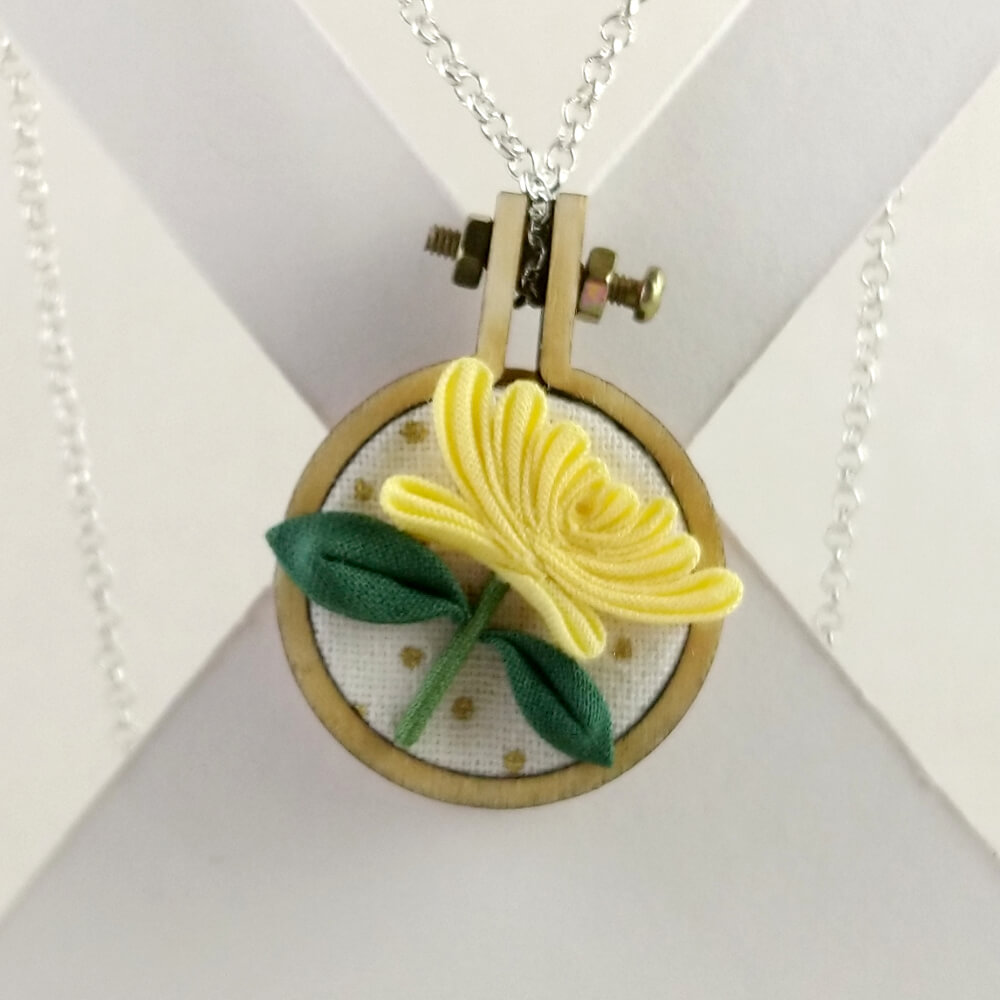
Chrysanthemum embroidery hoop pendant 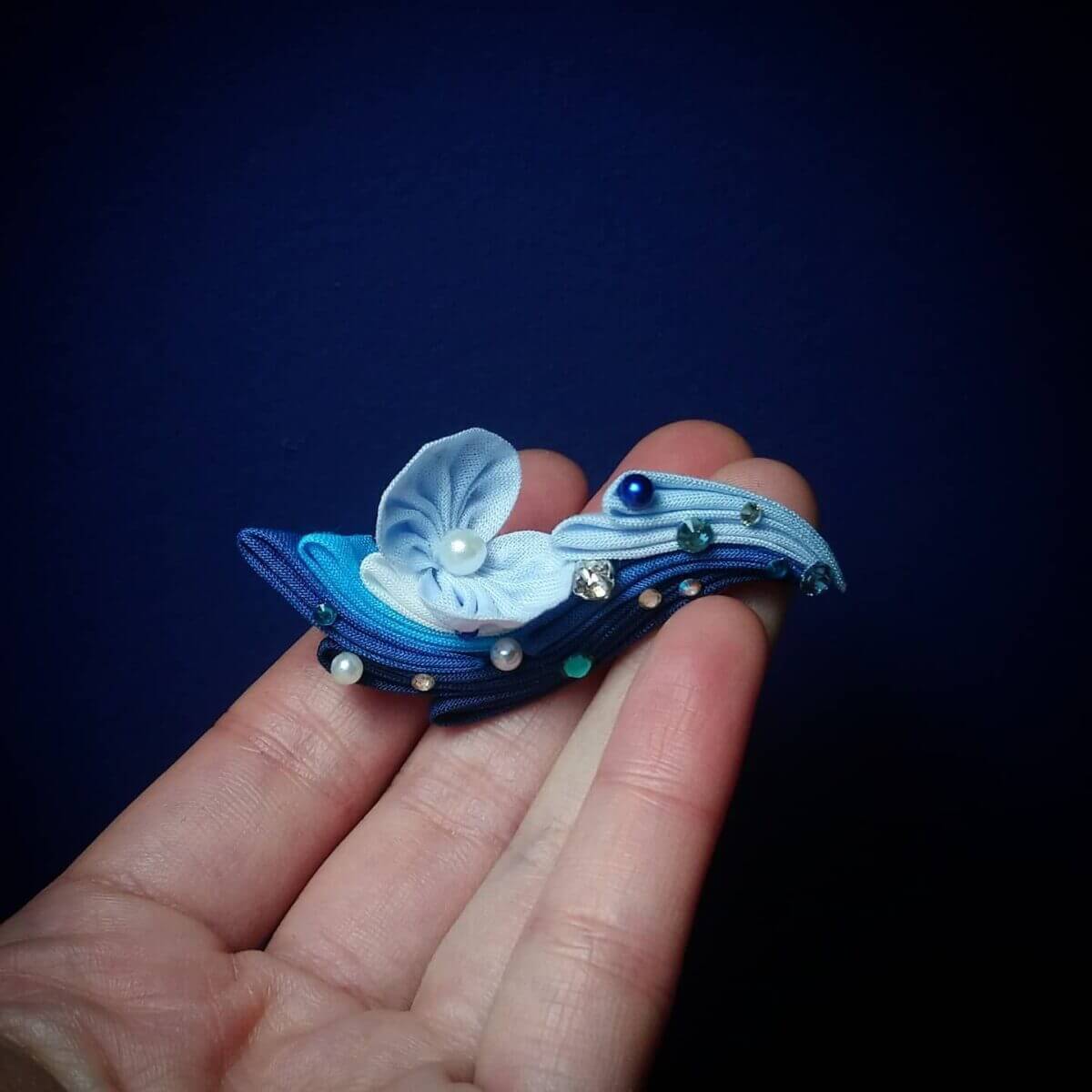
Ocean wave pendant 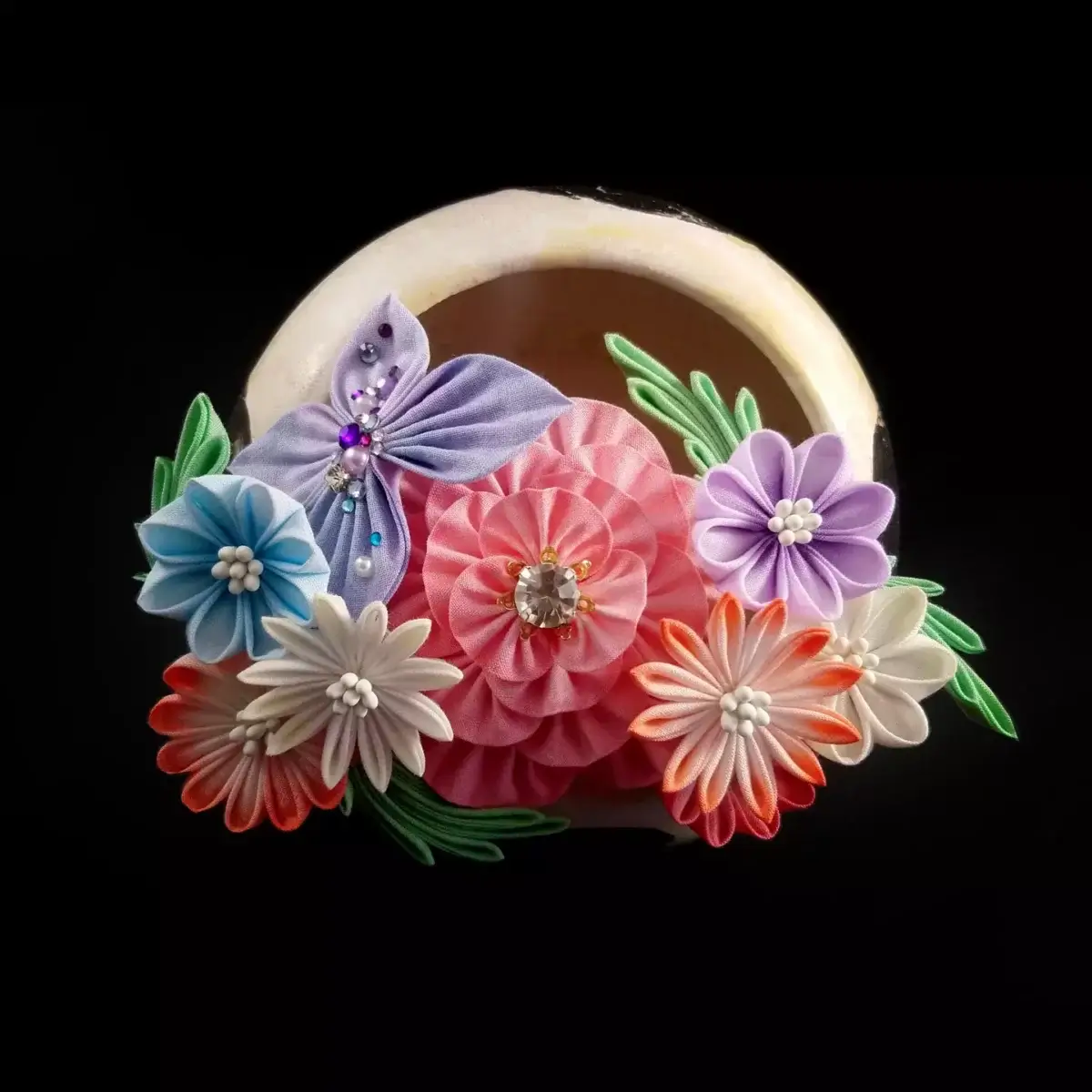
Hair accessory set designed for special occassions 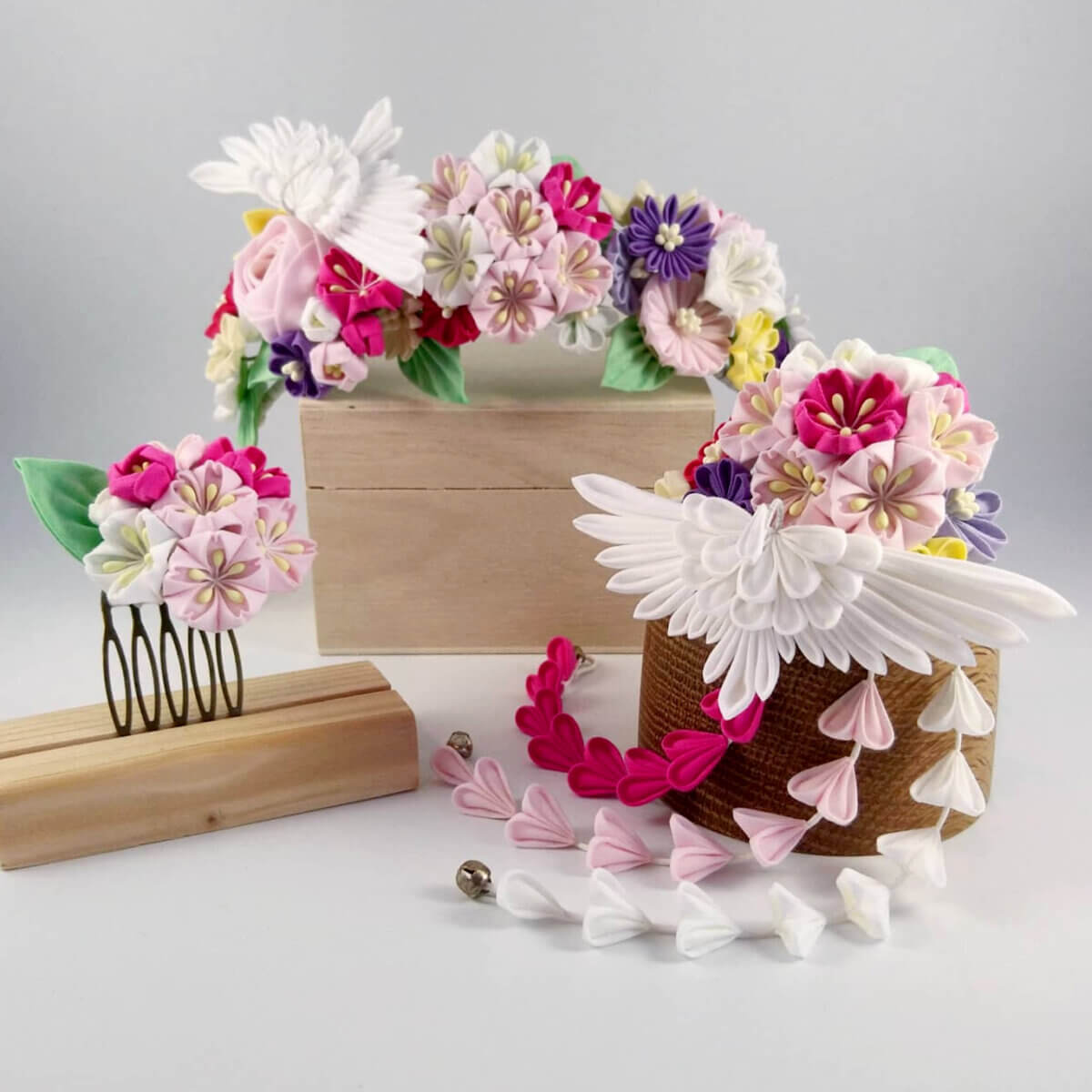
Geisha-inspired 3-piece headpiece set
Conclusions
This article is a summary of the information I have read so far. Hopefully, it has given you a rough but better idea on the history of Tsumami-Zaiku. If I have found anything new in the future, I shall write about it again. Once again, I would like to thank Ms. Yamashita for the information she kindly provided and her permission for the publication of this article. Please visit her website for her latest articles on Tsumami-Zaiku.
